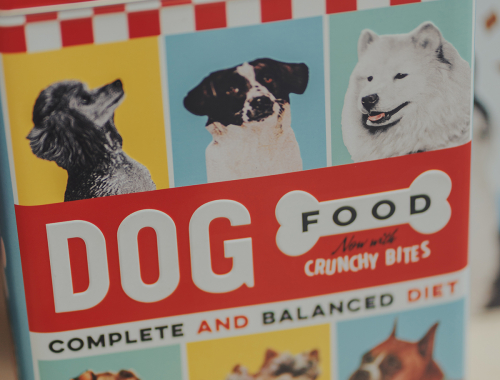Our sweet dog, Gent, who always has a smile on his face and loves life, was diagnosed at the young age of 4 years old with a heart murmur, mitral valve disease, and eventually congestive heart failure. This was a huge blow to our family, as we anticipated having another ten years with our happy pup—but this diagnosis may cut that remaining time in half.
Gent is a purebred Cavalier King Charles Spaniel, and unfortunately heart problems run in the genetics of his breed. Although we went to great lengths to find a responsible and reputable breeder (who has been showing Cavaliers for almost twenty years) who only bred extensively health-tested parents, we couldn’t completely outwit the genetic roll of the dice.
At the time of his diagnosis, the veterinarian determined that it was too early to start him on prescription heart medications. Gent is also hypothyroid and is already on daily doses of levythyroxine. We decided that we would do all we could to research and treat Gent’s heart, with or without a prescription.
What is mitral valve disease?
To understand this disease we need to take a step back in time to high school anatomy. The heart has four chambers and each chamber of the heart has a one-way valve that prevents blood from flowing backwards. The right chambers oxygenate unoxygenated blood then send it onto the lungs and eventually the left chambers. The mitral valve is located between the left atrium and the left ventricle. These two left chambers are responsible for pumping oxygenated blood back into the body where it can be used.
In Cavaliers (and other breeds with similar heart problems), the mitral valve is too delicate and “wears out” quickly. When blood leaks out of the valve, this is known as mitral valve regurgitation and causes the heart murmur. Approximately 10% of dogs of any breed develop heart disease, and around 80% of heart disease is due to mitral valve insufficiency.
The mitral valve can also be weakened by endocarditis (heart bacterial infection) which usually happens when bacteria from the teeth migrates to the heart. In breeds like Cavaliers, where bad hearts and bad teeth are endemic, it’s a double whammy on our best friends’ tickers.
As more and more blood leaks and flows backward into the left atrium, the heart can no longer pump as efficiently. This eventually leads to an enlarged heart as it tries harder and harder to pump blood. Ultimately congestive heart failure develops which leads to early death.
What are the symptoms?
The most visible symptoms, besides the diagnostic heart murmur, are reduced stamina (tiring more easily on walks) and a hacking or gagging cough that occurs because the blood starts to leak into dog’s lungs. As the heart struggles to provide oxygen and nutrients to the tissues, the bodily cells become distressed and weakened. Hormones are released that try to increase blood circulation. A side-effect of these hormones is heightened fluid retention, so you may notice swelling in the ribcage, limbs, and belly. If the fluid retention remains for an extended period of time, more fluid escapes into the lungs which further worsens symptoms.
What are the treatment methods?
There are really only three mechanisms by which we can slow the progression of heart disease, although both mechanisms can be implemented in a variety of different ways.
- Decreasing the load on the heart by making blood circulation easier and reducing inflammation.
- Reducing swelling and fluid retention.
- Preventing endocarditis by keeping the teeth free of bacteria.
Over-the-counter treatment
Heart Tonic (Methods 1 and 2)
If I could only give one over-the-counter treatment, it would be the Heart Tonic by PHNC. Each ingredient in the tonic is carefully selected to address both primary and secondary symptoms of mitral valve disease. Hawthorn berries dilate the blood vessels to increase healthy blood circulation, and provide needed antioxidants and flavonoids for the heart muscle. Gingko leaf inhibits platelet aggregation so blood doesn’t stick together as much, which prevents disastrous clots in the veins. Dandelion leaf is a potent, potassium-sparing diuretic which is the closest natural analog to prescription spironolactone (one of the diuretic meds vets use to treat fluid retention). Motherwort herb prevents heart palpitations that further weaken an already weakened heart.
Heart Glandular (Method 1)
A healthy heart muscle needs substantial taurine and carnitine in the diet. Wolves and wild dogs get plenty of these nutrients from the organs of their prey. Domesticated dogs can’t get nearly enough of these nutrients in commercially processed kibble or canned food. Unless your dog is on a raw diet with plenty of fresh organ meat, they could benefit from heart glandular supplements. The Heart Glandular powder by PHNC is sourced from grass-fed New Zealand cows and can be sprinkled onto any type of food
Omega 3 Oil (Method 1 and 3)
Most pet food contains too much omega 6 oil and not enough omega 3 oil. A diet lacking in omega 3s is very pro-inflammatory and more inflammation is disastrous to a dog already saddled with heart disease. Other positive benefits of omega 3s include a shinier fur coat, cleaner teeth, and healthier skin (read: less scratching and itching). My favorite source of omega 3s is Foods Alive Chia Seed Oil because it does not turn rancid as easily as fish or flax oils. The Foods Alive stock has unfortunately been fluctuating, and in a pinch I’ll replace it with Seeds of Wellness Chia Oil although it has much less convenient packaging for dog food application. I have also successfully used Alaska Naturals Salmon Oil for Dogs sourced from wild-caught fish, but for some reason my dog didn’t like it quite as much, even though he loves fresh fish!
Multivitamins (Method 1, 2, and 3)
I tend to avoid multivitamin or all-in-one formulas because you never know exactly what ingredient(s) are providing the benefits, and if you do see a positive change, you’re locked into one brand’s proprietary formula. But after an overwhelming positive response to PHNC’s Heart Tonic, I was more than happy to give their Daily Multi Plus a try. This green powder combines 9 glandulars from grass-fed New Zealand animals, 13 types of digestive enzymes, 14 strains of probiotics, plus a few repeats from the heart tonic formula such as hawthorn berries and gingko leaf. Although I couldn’t quite isolate the benefits of this multi formula from the heart tonic, it certainly isn’t doing any harm, and the reviews are true—even picky eater canines find it extraordinarily tasty.
Vitamin E (Method 1)
A 40-year study1 on both dogs and humans showed immense benefit of the vitamin for dogs with heart problems (the author of the study was a breeder and shower of Doberman Pinschers). Vitamin E improves the longevity of red blood cells and promotes healthy blood cloting. Wendell O. Belfield, DVM, also reported adding another six years of life to a terminally ill senior Griffon dog with the use of vitamin E2. The research is certainly convincing, and I now add vitamin E to the dog food at every meal. Because dogs are sensitive to additives often found in vitamin E oil mixtures, I now only use Now Foods Vitamin E Liquid which only contains pure vitamin E suspended in olive oil. (I learned the hard way after my dog’s bad reaction to lemon in this mixture.)
Hip and Joint Supplement (Method 1)
Breeds prone to heart disease tend to also suffer from problems in the joints such as hip dysplasia and luxating patellas. A heart already struggling to function will be further stressed by inflammation in the joints as the heart tries to circulate even more blood to those painful areas. By reducing stress on the joints, we can help improve a dog’s quality of life and reduce the heart’s workload. VETIQ Hip and Joint for Dogs contains time-tested ingredients such as glucosamine, MSM, krill oil, vitamin E, manganese, grape seed extract, fish oil, and hyaluornic acid. These are tasty treats that can be fed with a meal or on their own.
Dental Water Additive (Method 3)
Adding dental additive to every bowl of water is a pain—but after our vet said that Gent’s heart was too weak for an anesthesia-assisted dental cleaning, we knew we had to do all we could to prevent bacterial infection. The additives that work the best tend to be the least tasty, so if your dog turns up his nose at the water bowl, you’ve got yourself a winner. TropiClean Oral Water Additive for Pets is our current favorite, and it contains green tea extract, cetylpyridinium chloride, and zinc gluconate to destroy bacteria and stop plaque formation.
Dental Food Additive (Method 3)
Food additives are another great way to stop oral bacteria in its tracks, leaving your dog with whiter teeth and a healthier heart. We used the highly rated Mad About Organics Daily Oral Care but with somewhat disappointing results. It changed the consistency of Gent’s saliva to be very sticky (which is supposed to help prevent plaque in the mouth) but his teeth weren’t noticeably improved at his next dental cleaning.
Oral Care Kibble (Method 3)
Gent hates chewing—he refuses to chew on chew toys and will simply inhale food and treats. Dogs that don’t chew have statistically worse teeth because chewing on hard surfaces is how wild dogs and wolves keep their teeth clean. We had high hopes for Royal Canin Small Breed Dental Care dry food with larger pieces of kibble coated with oral care ingredients and shaped to promote chewing. But even though the kibble was comically large (about the size of the quarter), Gent still managed to mostly swallow his food whole.
Mouthwash for Dogs (Method 3)
Even though we brush his teeth every night (really), the bacteria in Gent’s mouth is still on the severe end. To help keep his teeth clean and his heart healthy, we added in a chlorhexidine “mouthwash” that’s safe for pets. No, they don’t actually have to gargle and spit, but they might try because the taste and smell of chlorhexidine is downright foul.
- 1.Shute W. Dr. Wilfrid E. Shute’s Complete Updated Vitamin E Book. Keats Publishing; 1975. https://amzn.to/3gkDjp2
- 2.Belfield WO. How to Have a Healthier Dog. Signet; 1982. https://amzn.to/3swVn1H




